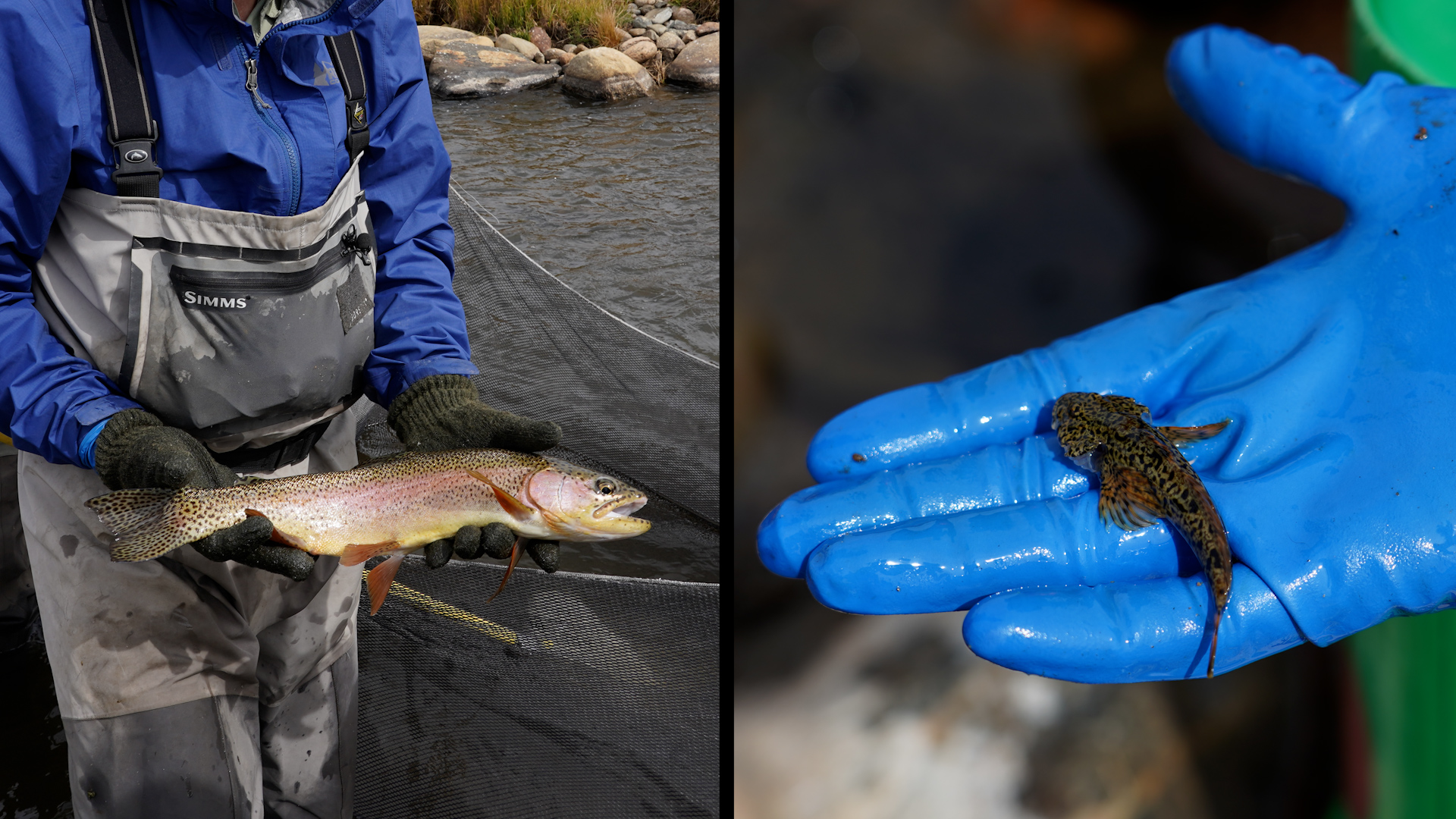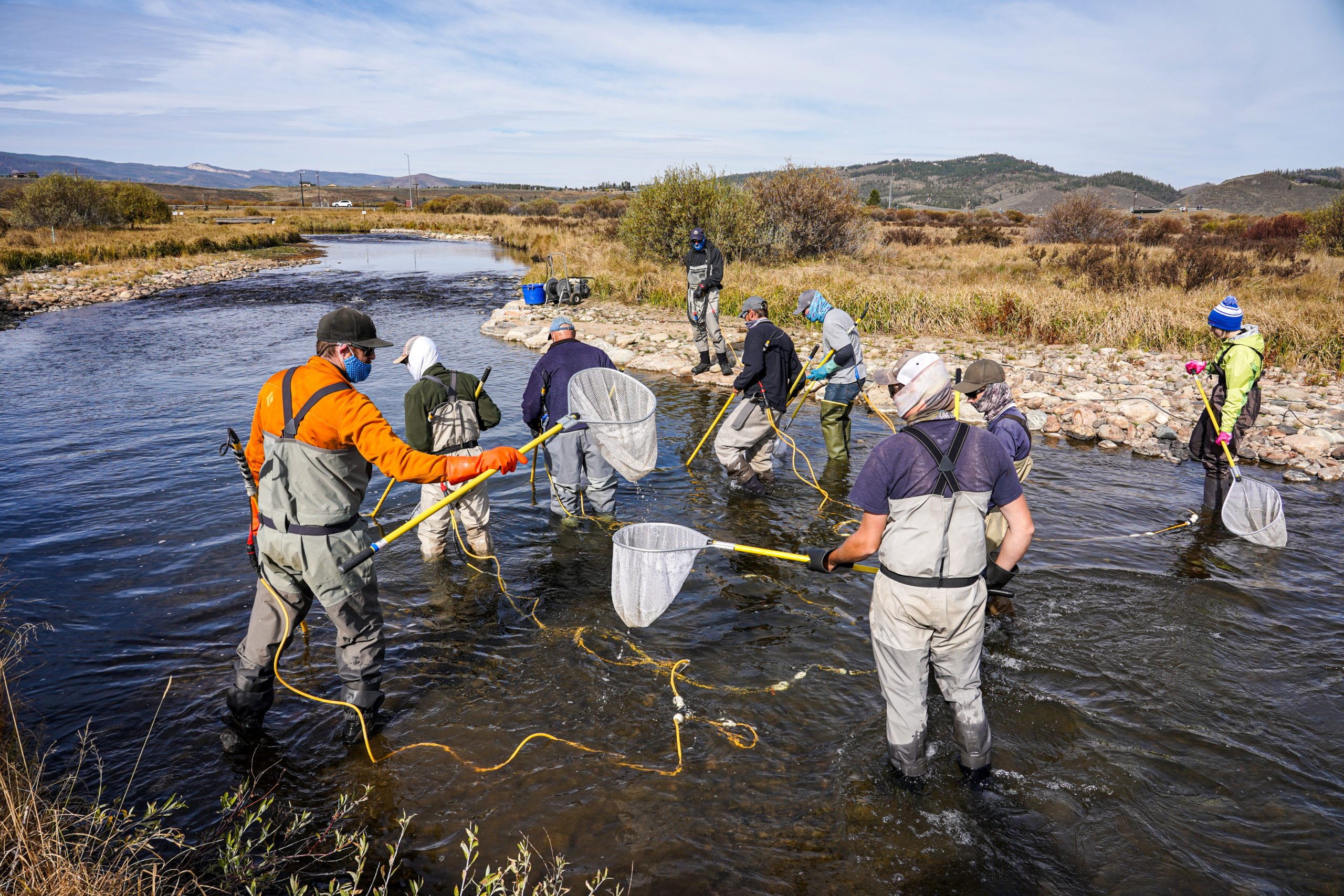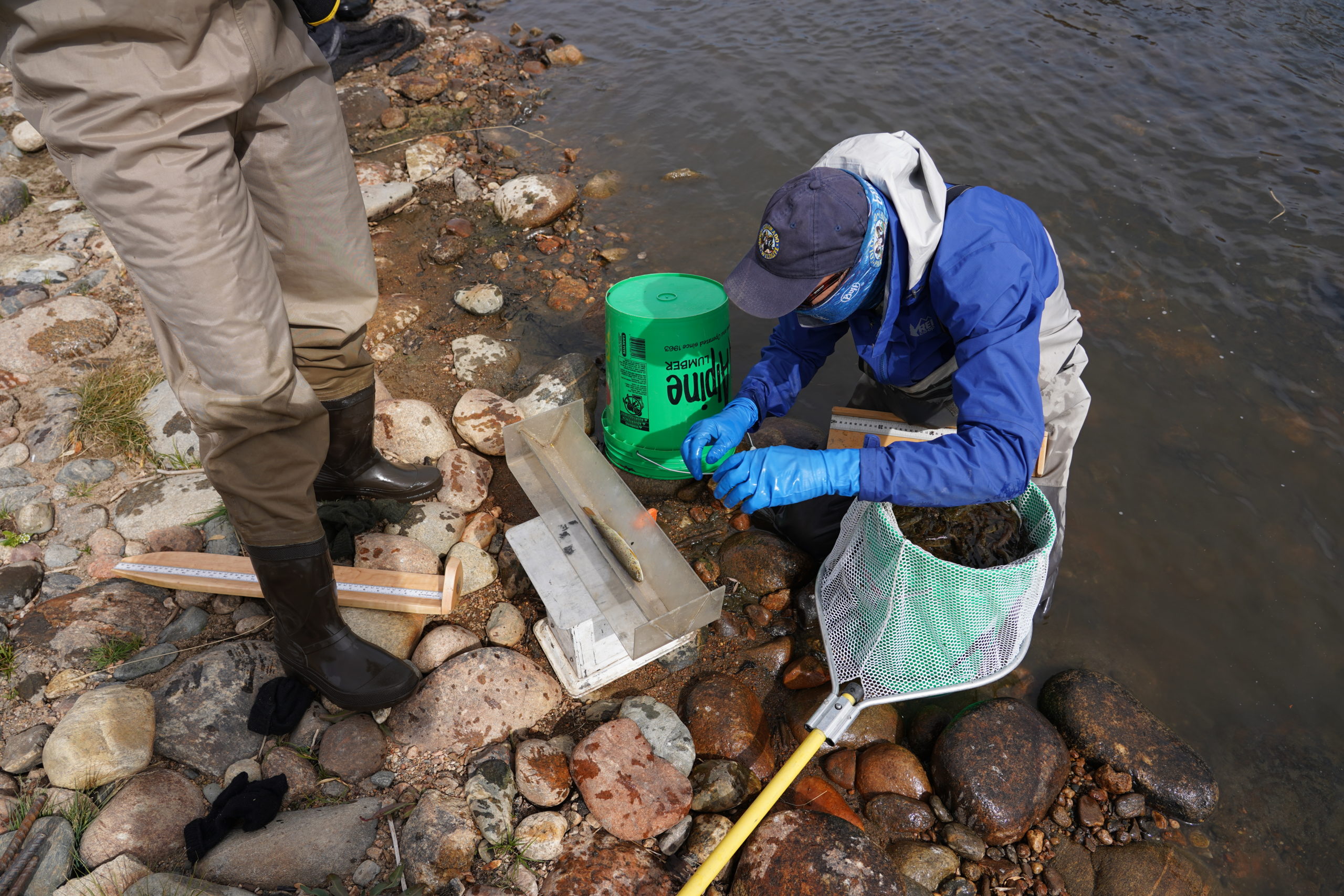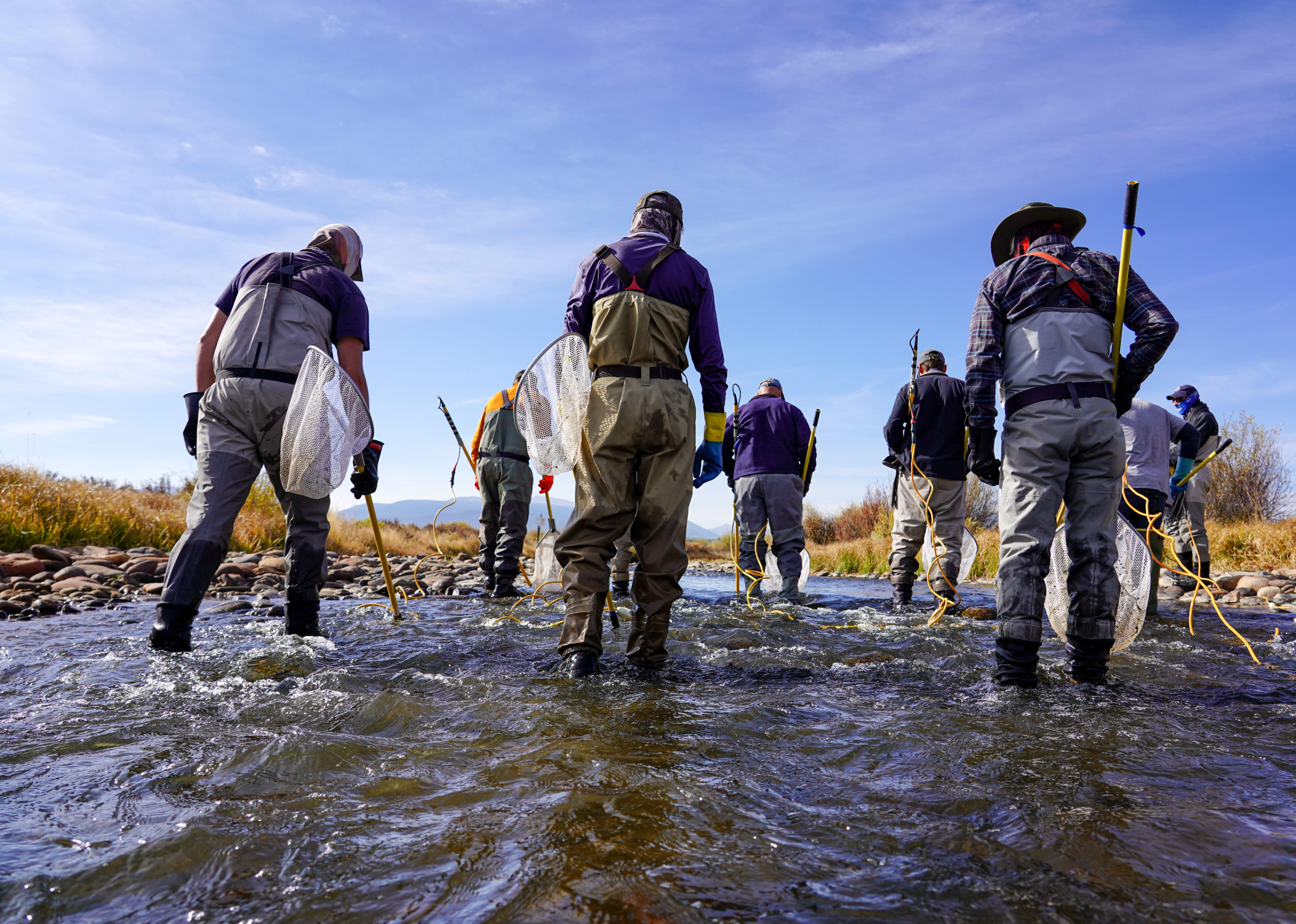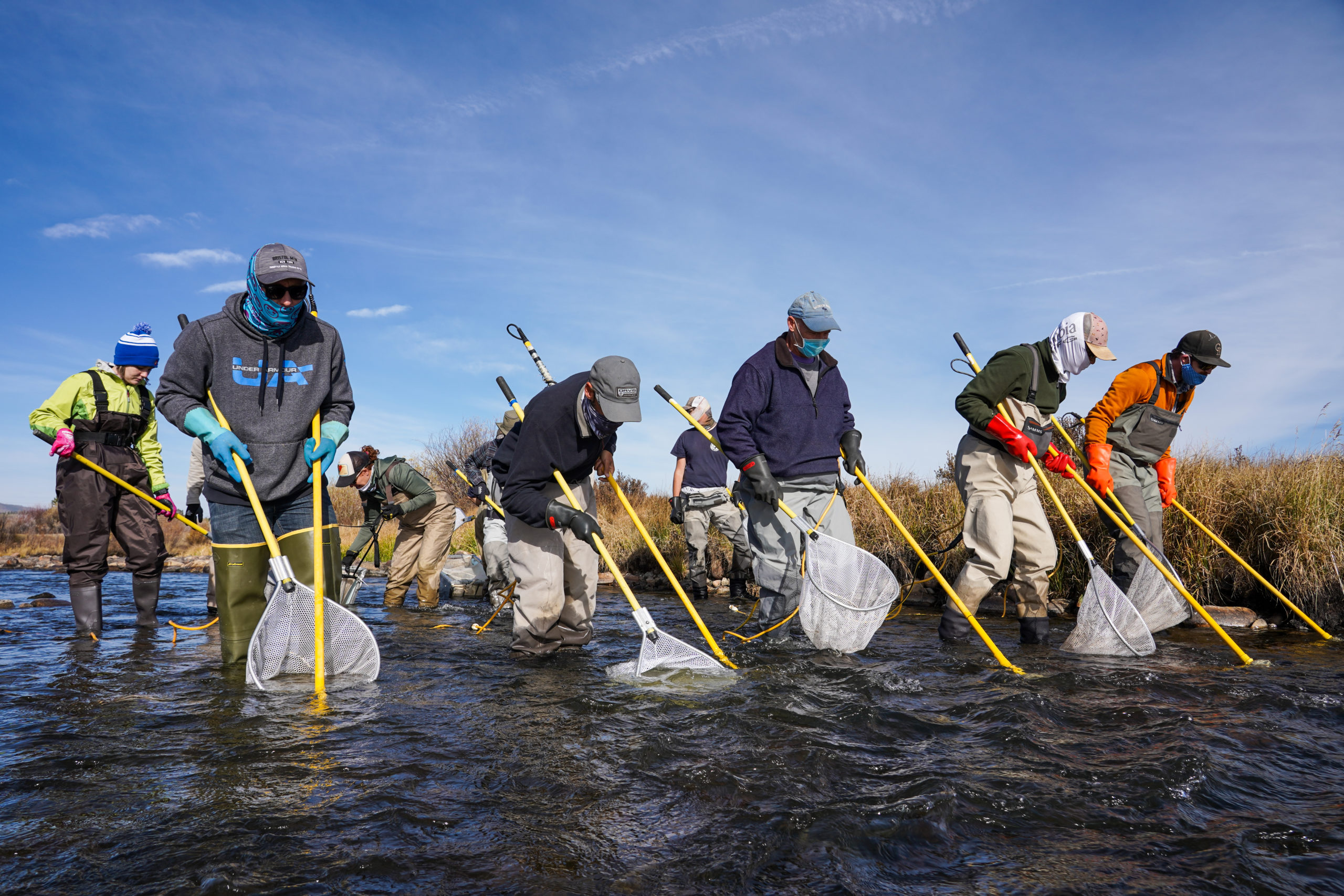
Going electrofishing on the Fraser Flats
Armed with electrified poles, waders and nets, a team of volunteers joined Colorado Parks and Wildlife workers in early October to survey the fish population on a 600-foot section of the Fraser River near the town of Fraser in Grand County.
The poles send a field of electric current into the water, temporarily stunning the fish so they’re easier to catch and measure.
The technique is called electrofishing. The practice is commonly used by aquatic biologists and rarely harms the fish. A generator alongside the river produces electricity, which is connected to the special poles with a wire. A Parks and Wildlife worker walks the shoreline with the volunteers and has an emergency stop button to shut off power in case of an emergency.
“We’re kind of like a baseball team walking up the river,” said Jon Ewert, an aquatic biologist with Colorado Parks and Wildlife. “The front row of volunteers is the infield, they try and catch the fish, but if the fish slip through, then the second row of 'outfielders' are there as backup to snag any with their nets.”
The most common fish caught by the volunteers during this outing were mottled sculpin, a small fish native to the Fraser. Other fish caught during the effort included brown trout, rainbow trout as well as brook trout and longnose suckers. After volunteers collected a sampling of the fish, Ewert noted the number, weight and length of each species caught.
Ewert conducts the electrofishing study on the same stretches of rivers and streams across Grand County each year around the same date to provide a consistent pool of data.
The data from the fish surveys are shared with Learning By Doing, a unique partnership between East and West Slope organizations in Colorado that focuses on maintaining the aquatic environment in Grand County and improving conditions when possible.
Denver Water is one of the partners and contributes money and resources to Learning By Doing projects.
The findings along the Fraser Flats section of the Fraser River are important to the Learning By Doing partners because this stretch of river went through a habitat restoration project in 2017.
“While many factors may impact a fish population in any one year, long-term trends help scientists identify problem areas and allocate resources as needed,” said Rachel Badger, environmental planning manager at Denver Water. “Learning By Doing uses this data to help evaluate the effectiveness of restoration projects and to identify streams that may benefit from habitat restoration or enhancement projects.”
Watershed health is important for Learning By Doing partners on both sides of the divide as it impacts both aquatic life and drinking water supply. Denver Water plays a role in the health of streams in Grand County because the utility collects about 20% of its water supply from the county’s rivers and streams near Fraser, Jones Pass and Winter Park.
Learning By Doing came about as part of the 2013 Colorado River Cooperative Agreement that established a framework for Colorado’s East and West Slope to work together in an effort to benefit water supply, water quality, recreation and the environment.
The Learning By Doing projects weren’t scheduled to begin until the Gross Reservoir Expansion Project was approved. However, Denver Water and other partners were eager to begin and started working on river projects shortly after the agreement was executed.
Over the last five years, Learning By Doing has made significant progress toward fulfilling its mission to maintain and improve Grand County’s aquatic environment.
Check out Learning By Doing's inaugural e-newsletter and consider subscribing to find out what the partners are accomplishing throughout the county.


